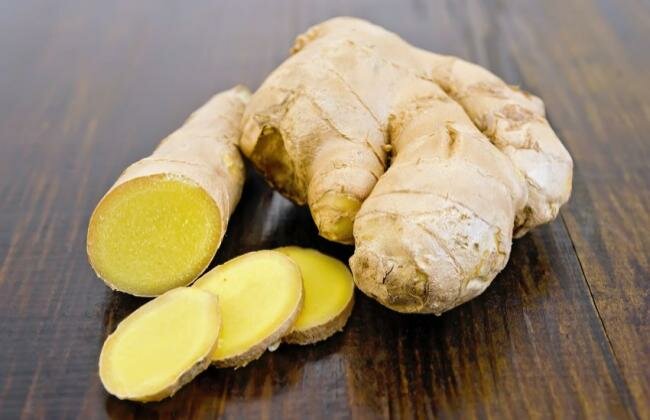Pain is one of the most discomforting and unpleasant feeling experienced by human body. Almost every person feels some kind of pain sometimes. We take a lot of painkillers to get rid of pain but not only the effect of these painkillers is temporary; but they are also not good for the body if you take them quite often.
However, the good news is that according to the latest researches, food can also cure pain. And sometimes, it does better than drugs.
Say Goodbye to Pain
On average, 116 million American adults suffer from chronic pain. This makes more than one third of the total population of the US. Pills can definitely reduce the pain to some extent but they can be addictive and have a lot of side effects as well. The worse thing is that this relief is temporary and does not eliminate the true reason behind the pain.
James N. Dillard, MD, Author of The Chronic Pain Solution says that chronic sufferers do not get complete relief no matter how well the medicine is subscribed to them. He says that the problem is huge and the medical community is doing a bad job solving this. But, you can definitely get rid of these pains and aches at home, by eating some foods that are there in your kitchen. These not only reduce the pain by fighting inflammation, but they also block the pain signals coming from your brain and also heal the cause behind the pain.
A botanist, James A. Duke, PhD, author of The Green Pharmacy Guide to Healing Foods says that if pharmaceuticals are doing the trick, plants can do it too; and that too, more safely. But to get all these benefits, you first need to quit eating junk food. The typical Western diet contains food that causes inflammation, including the refined carbs and highly processed food. Fruits, vegetables or herbs can never help you eliminate the pain if you do not quit eating junk food or unhealthy and processed food and switch to whole food.
Peter Abaci, MD, medical director of the Bay Area Pain and Wellness Center in Los Gatos, CA, says that this may not be easy but staying committed to a good nutrition plan makes you say good-bye to pain.
Here are 10 pain fighting foods that you should eat in order to stay healthy:
1. The Rx: Turmeric
The Target: Achy joints, colitis (an infection of the colon)
The Dose: 1 Tablespoon daily
Turmeric has been used for healing since ages. People have been using it in Ayurvedic medicine to treat pain and speed up the digestion. Researchers like it for another reason too; its anti-inflammatory properties. This is because of the presence of a substance called curcumin in them. Abaci says that turmeric can help prevent the body tissue from any damage, joint inflammation and also improves the nerve cell function.

If you do not like curry, you can sprinkle turmeric on cooked grains, soups, salad dressings and vegetables. You can also take turmeric supplements for the proper dose (while getting supplements, make sure that the label mentions 95% curcuminoids). Another thing that you need to keep in mind while cooking with turmeric is to use pepper with it. Dillard says that turmeric and black pepper should be used together as the pipperine in the black pepper helps release curcumin from turmeric.
2. The Rx: Ginger
The Target: Migraines, Arthritis, Sore Muscles
The Dose: ¼ teaspoon daily
Ginger is known for its amazing properties; either they are about enhancing the taste of the food, or curing a lot of diseases. It is known to soothe the stomach, ease sickness and also helps you get rid of nausea. It breaks up the intestinal gas and blocks a receptor in the gut that is responsible for vomiting. But, it’s not necessary to eat ginger only when you are having some stomach issues. Ginger also has anti-inflammatory properties and is a natural aspirin impersonator. It helps cure migraines, arthritis pain and muscle aches.
There are a lot of methods of consuming ginger. You can grate it and add to Asian dishes, smoothies and juices. You can also drink ginger tea by placing peeled and sliced ginger root in water while it’s boiling and let it steep for about 15 minutes. Another great way to consume ginger is by drinking ginger lemonade (this makes an amazing detox drink as well if you leave the ingredients in water overnight). Add grated gingerroot, honey and lemon juice in ice water and drink.

3. The Rx: Cranberry Juice
The Target: Ulcers
The Dose: 1 cup daily
Cranberry juice is an amazing solution to a lot of problems related to stomach and small intestine. There is a pathogen called H. pylori that is the main reason behind ulcers as it attacks the protective lining of the stomach and small intestine. Usually antibiotics are prescribed but prevention is better than cure; you can drink one cup of cranberry juice daily to prevent any such conditions as it blocks the ability of H. pylori to get attached to the stomach and the small intestine.

According to a study, drinking one cup of cranberry juice every day for three weeks helps eliminate almost 20% of all the cases of H. pylori infection, without using any drugs. But you need to take care that adding sugar to it makes it inflammatory so you should prefer drinking 100% natural cranberry juice. If you find it bitter, you can add water to it to balance the taste. You can also add natural sweeteners like stevia.
4. The Rx: Salmon, Herring, Sardines
The Target: Achy back, neck, joints.
The Dose: Two to three ounce servings weekly
Fish is a rich source of omega-3 fatty acids. Along with a lot of other health benefits, these fatty acids also help relieve back pain. Salmon, Herring and Sardines are low in mercury and high in omega-3 fatty acids. Neal D. Barnard, MD, author of Foods That Fight Pain, says that in a healthy back, the blood vessels located at the edge of the spinal discs supply the important nutrients to the discs whereas the discs began to degenerate if the nutrients (including oxygen) are not supplied due to diminished blood flow.
Omega-3 fatty acids help improve the blood flow and reduce the inflammation in the blood vessels and nerves. But, for the complete effects, you sometimes do need supplements as well. According to a study published in the journal of Surgical Neurology, taking 200 mg or more of DHA and EPA per day helps reduce both, back pain and neck pain. Not only this, it has other benefits as well. Joseph C. Maroon, MD, the study’s lead researcher says that any amount of fish oil taken helps protect the cardiovascular system and improves your mood too. Another study also states that people feel more pain and discomfort when they are gloomy. (A plus point, omega-3s may also reduce brain shrinkage)
5. The Rx: Cherries
The Target: Arthritis, Muscle Pain
The Dose: 45 Daily
Cherries contain compounds called anthocyanins, the same phytonutrients that are responsible for the rich blue hue in the cherries. These powerful antioxidants help reduce pain in two ways; Muraleedharan Nair, PhD, natural products chemist at Michigan State University’s College of Agricultural and Natural Resources says that not only they block the inflammation, they also inhibit the pain enzymes in our body. Just the way drugs like aspirin, naproxen and other non-steroidal anti-inflammatories dol.
According to a study published in The Journal of Nutrition, people who used to eat one bowl of cherries in breakfast experienced a 25% reduction in their inflammation. According to some other researches, players who drank 12 ounces of tart cherry juice twice daily for seven days for a distance run experienced less muscle pain as compared to those who did not drink it.
6. The Rx: Yogurt
The Target: IBS
The Dose: One or two 8-ounce containers daily
On average, 20% of the Americans having irritable bowel syndrome, experience stomachache. The cure may come in the form of a bug- a lot of bugs actually. Yogurt contains some bacterial strains (like B.infantis and L. acidophilus) help eliminate pain, inflammation and bloating, according to a 2010 review.
According to another study, same results were observed with B. lactis. But, you need to be careful while shopping as not every yogurt contains probiotics. Search for a brand with “live and active cultures”. If you are looking for a vegan substitute, you can go for probiotic-enriched soy yogurt.
7. The Rx: Coffee
The Target: Headaches
The Dose: Two 4-ounce cups
Along with its amazing taste, coffee is an excellent medicine as well. Andrew Weil, MD, the founder and director of the Arizona Center for Integrative Medicine says that caffeine helps reduce pain as it narrows the dilated blood vessels that are developed with headaches.

Coffee helps reduce pain by itself and it promotes and increases the effects of other pain relievers too. But, you need to be careful as too much caffeine can be harmful as well. Also, on quitting caffeine, you get withdrawal headaches that can be quite disturbing. Coffee helps relieve pain only if you do not consume it on a regular basis.
8. The Rx: Mint
The Target: IBS, headaches
The Dose: 1 cup of tea daily
We all know we should keep peppermint with us at times, to freshen our breath, but there are some other reasons why trying this herb is important. Peppermint contains menthol in it that helps prevent muscle spasms and treats irritable bowel syndrome too. Peppermint oil is very useful to treat headaches. You can apply it on your wrists and temple and breath in the fresh scent to cure headache.
Botanist James A. Duke, PhD, author of The Green Pharmacy Guide to Healing Foods recommends brewing mint tea to relieve any kind of pain. You can pour boiling water over peppermint leaves and let it steep for as longer as the tea is perfectly strong for you. For an extra pain-fighting boost, you can add wintergreen leaves too. Wintergreen leaves contain a compound called methyl salicylate that blocks the inflammation and pain causing enzymes. He says that you can also call it herbal aspirin. Also, adding lemon in it extracts as many pain-reducing chemicals from the plants, as possible.
9. The Rx: Edamame
The Target: Arthritis
The Dose: ¼ cup daily
Osteoarthritis is a very challenging situation when it comes to culinary fixes for pain. Wear and tear on the joints that leaves the cartilage ragged and the bones grinding against each other leaves effects that are not reversible at all. However, there is hope for relief to some extent.
Researchers from Oklahoma State University did a research and gave 40 g of soy protein (about ¼ cup of shelled edamame) to one group of participants and 40 g of milk based protein to the other group, for three months. They results showed that the group that was given soy protein experienced a reduction in pain while the one which was given milk protein did not experience any change.
James N. Dillard, MD, author of The Chronic Pain Solution says that by soy proteins he means tofu, tempeh and other forms of whole soy that are fermented. Not the soy protein isolates that are quite commonly seen in processed snacks in the market. Cooking with tofu is quite simple, as long as you know the basics. It tastes good too. Silken tofu is soft and often used in soups, desserts and creamy dressings whereas firm tofu is often cooked like meat as it is marinated and grilled.
10. The Rx: Hot Peppers
The Target: Arthritis
The Dose: Half a teaspoon of powder daily
Like turmeric, black pepper and a lot of other spices that enhance the taste of our food, hot peppers also have a lot of health benefits. The same hot peppers that bring tears in your eyes and burn your tongue also help you get rid of your pain.
There is an ingredient called capsaicin in hot peppers that helps you relieve your pain. It does that by stimulating the nerve endings and inhibits the activity if a chemical that is responsible for relaying the pain signals. Duke, who also uses capsaicin to reduce his own arthritis pain, says that you can buy creams that contain capsaicin at most of the pharmacies.
Though topical relief is the most effective solution for arthritis, eating hot peppers also has a lot of pain-fighting benefits. Duke says that he sprinkles some chili sauce on his food and adds peppers to his soup to reduce his arthritis pain. The hotter the pepper tastes, the more capsaicin it contains.
But, you need to be careful with hot peppers. You should wash your hands thoroughly after handling them and try not to touch your face or eyes before that. An amazing tip to cancel out the effect of hot pepper on your hands to clean them with a towel wet with milk. It works way better than water.
A lot of the above mentioned foods taste amazing. You should try to add them to your diet and take the suggested dose in order to reduce the pain and cure the causes behind it. Natural is always better than what we create. Try treating your pain by eating these foods regularly, instead of eating pain killers that cause a lot of side effects and you yourself will notice the change.




